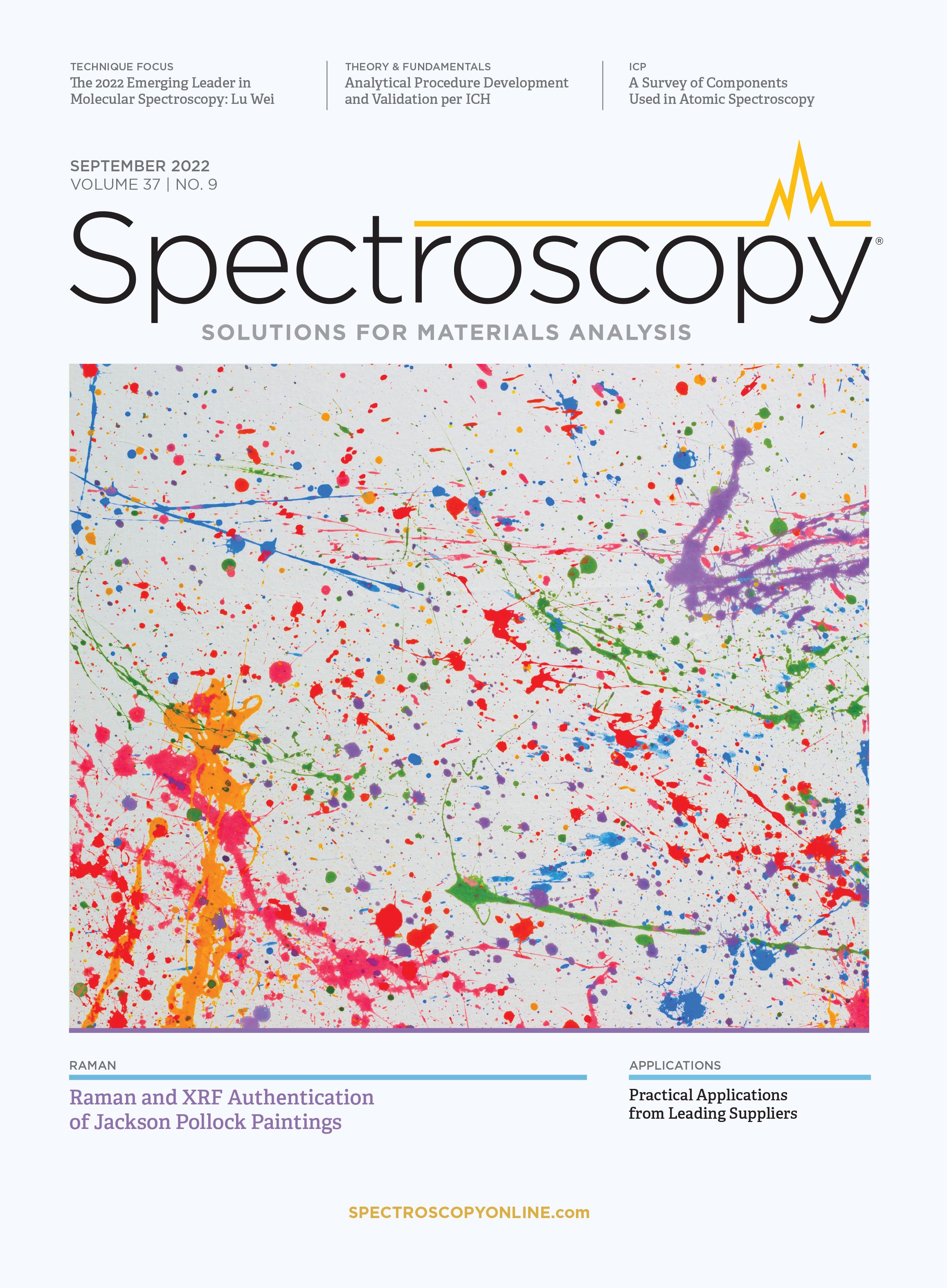The 2022 Emerging Leader in Molecular Spectroscopy Award
This year’s molecular spectroscopy award recipient is Lu Wei, an assistant professor of chemistry at the California Institute of Technology in Pasadena, California. From her days as a graduate student at Columbia University, Wei’s work has focused on the development and application of stimulated Raman scattering (SRS) microscopy for bioanalysis, spectroscopy-informed design of vibrational imaging probes, and sample-engineering strategies.
Lu Wei is an assistant professor of chemistry at the California Institute of Technology. Her research focuses on the development and application of stimulated Raman scattering (SRS) microscopy for bioanalysis, on informed design of vibrational Raman imaging probes, and on specialized sample-engineering strategies. Wei has already made several seminal contributions in the field of nonlinear Raman spectromicroscopy, pushing to the next frontier of multiconstituent, high spatial resolution, and biological Raman imaging.
Lu Wei of the California Institute of Technology
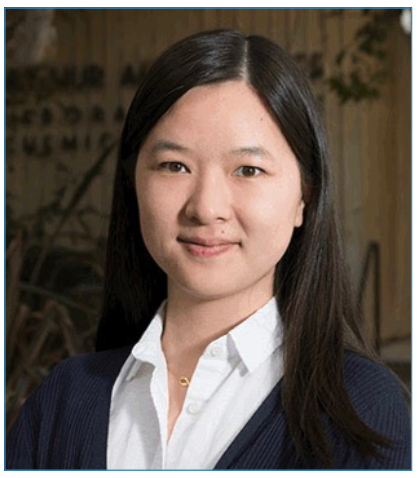
Summary of Research Work
Wei received her PhD in 2015 from Columbia University. During her PhD work, Wei pioneered a bio-orthogonal chemical imaging platform coupling SRS with small bio-orthogonal chemical probes, allowing for the noninvasive imaging of metabolic dynamics in live cells and tissues with high spatial and temporal resolution. Such imaging is used for life science applications (for example, investigations of living cellular metabolism).
She further developed a supermultiplexed optical imaging strategy that exploited a unique pre-resonance SRS excitation region, and achieved remarkable sensitivity with up to 24-plex imaging, which allows the measurement of up to 24 molecular components simultaneously.
Since starting her independent career at the California Institute of Technology (Caltech) in 2018, Wei has been working to develop next-generation Raman microscopy to achieve unprecedented resolution, sensitivity, and multiplexity with improved molecular precision and quantification, especially for complex bioanalysis pathways. One of her key contributions is the development of supermultiplexed and super-resolution vibrational microscopy for subcellular structure—function phenotyping in a complex cellular and biological tissue environment. Toward this end, she devised a label-free super-resolution SRS imaging strategy and obtained the first multiplexed imaging to within a spatial resolution of 100 nm. She also pioneered the development of advanced vibrational chemical probes (such as a photoactivatable and photoswitchable Raman probes), which is a significant component for achieving supermultiplexed and super-resolution vibrational microscopy.
Wei has also pioneered a selective deuterium strategy that has demonstrated the first in situ live-cell quantification and spectral analysis of aggregate composition from native polyQ aggregates, the key hallmark for Huntington’s disease. In addition, she further developed and applied subcellular Raman spectromicroscopy with data-mining cross-correlation to transcriptomics and lipidomics for Raman-guided subcellular pharmaco-metabolomics for metastatic melanoma.
Wei has published 28 papers with 1913 citations and has given 30 oral presentations at scientific conferences. She is a reviewer for multiple journals, including, among others, Nature Communications, Proceedings of the National Academy of Sciences of the United States of America (PNAS), Journal of the American Chemical Society, Chemical Science, Angewandte Chromatographie, ChemComm, Journal of Physical Chemistry Letters, Journal of Physical Chemistry B, Small, Langmuir, ACS Omega, Theranostics, Optics Express, Optics Letters, and Biomedical Optics Express.
Wei performing a stimulated Raman scattering (SRS) imaging experiment at Caltech in 2018.

Most Impactful Work to Date
In assessing Lu Wei’s impact on the field, it is useful to look at both her mostly highly cited papers, as well as those considered to be most important by her close mentors and peers. The following publications are noted by the recognition of mentors and peers and by the total number of literature citations to date.
Most Recent Research Publications
The most recent papers by Wei, published since 2019, represent her current research work in the development of Raman probes, Raman imaging, and SRS, as well as advancing imaging analysis techniques.
In a 2022 paper, Wei and coworkers reported on a general strategy for Raman imaging-based local environment sensing using the hydrogen–deuterium exchange (HDX) of terminal alkynes (termed alkyne-HDX) (1). The paper applied multiple Raman probes to demonstrate that deuterations of the alkynyl hydrogens lead to large shifts of alkyne Raman peaks of up to 130 cm–1. These shifted peaks provided signals suitable for high specificity image-based analysis. The work is broadly applicable for using the alkyne-HDX strategy for the quantitative analysis of multiple bioactive molecules in complex biological samples.
Wei shown aligning the optical path for the stimulated Raman scattering (SRS) microscope at Caltech.

A book chapter authored by Wei, Wang, Du, and Lee was published in 2022, containing recent developments in applying SRS for vibrational imaging and mapping of biomolecular analytes in living cells (2). SRS microscopy, when combined with small Raman-active molecular probes, enables detailed biochemical imaging. This chapter reviews a series of vibrational probes reported to date for SRS imaging and their labeling strategies. This imaging technique is useful for studies in cell and tissue metabolism, pharmacokinetics, chemical sensing, cell screening, and phenotyping.
A United States patent application by Wei and collaborators in 2021 described a system using excited fluorescence radiation (3). The patent application introduces stimulated Raman coupled fluorescence (SRCF) and stimulated Raman excited fluorescence (SREF) for imaging fluorescent probes, with improved signal-to-noise (S/N) ratios compared to conventional fluorescence detection. These techniques are especially applicable for multiplexed detection. SRCF is able to achieve high sensitivity down to the single-molecule level by adopting electronic pre-resonance SRS (epr-SRS), which yields a Raman signal enhancement factor of more than 1011 amplification. For both SREF and SRAF, the electron transition induced by the probe beam could optionally be either one-photon or multiphoton excitation. These combined techniques are useful for multianalyte spectral imaging in microscopic biological samples.
Wei shown performing a wet laboratory experiment in the then brand-new Wei Lab at Caltech in 2018.
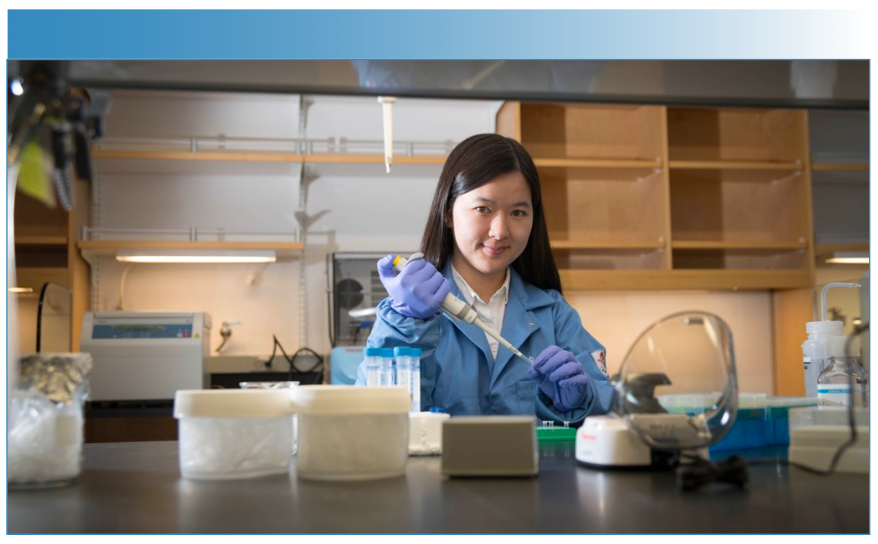
In another paper, Wei and Du reported the first general design of multicolor photoactivatable alkyne Raman probes for live-cell imaging and tracking (4). These probes are based on cyclopropenone caging chemistry and demonstrate high sensitivity Raman imaging with customizable or photocontrollable features. Single-cell and organelle-targeting probes were synthesized and tested to achieve images of mitochondria, lipid droplets, endoplasmic reticulum, and lysosomes. This technique should provide new tools for the study of complex biological organelle systems.
In 2021, Wei and coworkers expanded the use of vibrational imaging strategy for Raman microspectroscopy, by introducing a technique they dubbed vibrational imaging of swelled tissues and analysis (VISTA), for scalable and label-free high-resolution images of protein-containing biological samples (5). VISTA exhibits spatial resolution as low as 78 nm for sample images, and renders three-dimensional (3D) images by image isolation of proteins, as well as elimination of scattering lipids. VISTA was able to generate label-free images of the nucleus, blood vessels, neuronal cells, and dendrites in complex mouse brain tissues, making the technique potentially useful for advanced anatomy and physiology analysis of cells and tissues. “I think the VISTA technique, applied to volumetric SRS imaging, will grow into an important tool for label-free tissue imaging (5),” predicts Eric Potma, a professor of chemistry at the University of California in Irvine.
Key Career Publications: Most Cited
In 2014, Wei and collaborators reported on the use of SRS imaging of alkyne tags as a general strategy for studying small biomolecules in live mouse cells and tissue (6). This paper demonstrated a new key method for tracking alkyne-bearing drugs in mouse tissues and visualizing synthesis of DNA, RNA, proteins, phospholipids, and triglycerides in living tissue by incorporation of the alkyne tags directly into the tissue sample measurement area.
Top: A mosaic super-resolved image of hippocampal tissue from a label-free SRS-imaging tailored sample-expansion strategy that was termed as VISTA (Vibrational Imaging of Swelled Tissues and Analysis). Bottom: zoomed-in high-resolution view from color-boxed areas (left: red box; right: blue box) and selected regions from the top image. Representative neuronal cell bodies, neuronal processes, and likely blood vessel cross-sections are indicated by green, blue, and white arrows, respectively.
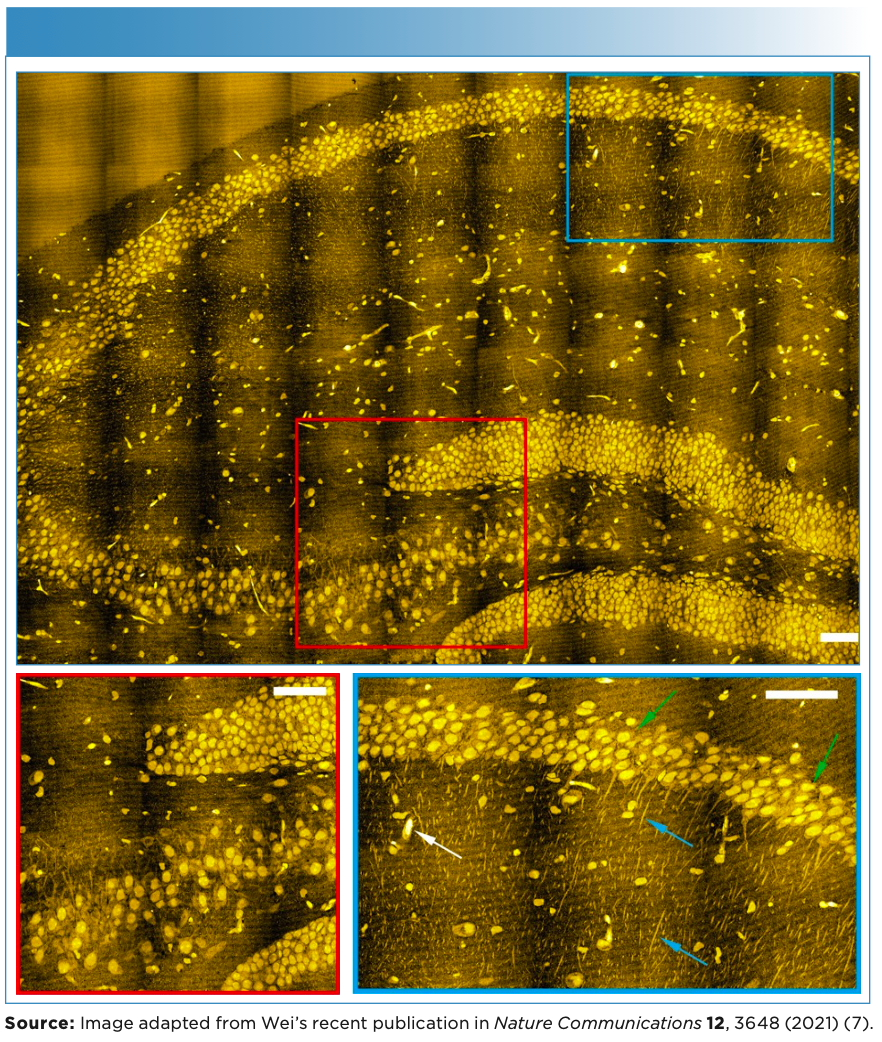
A method for direct imaging for multiple molecular species inside cells was demonstrated by Wei and her colleagues in 2017 (7). They used SRS under electronic pre-resonance conditions to image target molecules inside living cells with high selectivity and sensitivity. As part of this work, the research group synthesized a palette of triple-bond-conjugated near-infrared (NIR) dyes where each dye displays a single distinguishable Raman peak. When combined with available fluorescent probes, a palette of 24 resolvable colors is available for supermultiplex optical imaging in complex biological tissue samples.
In a publication within the Proceedings of the National Academy of Sciences, Wei and coworkers described an imaging technique to visualize proteins using SRS microscopy coupled with incorporation of deuterium-labeled amino acids (8). The authors noted that incorporation of deuterium-labeled amino acids is minimally perturbative to live cells, and that SRS imaging of exogenous carbon–deuterium bonds (C–D) in the cell-silent Raman region is highly sensitive, specific, and compatible with living systems to generate spatial maps of the new and total proteomes in vivo within cells.
In a 2018 publication in Nature Methods, Wei and her coauthors designed and synthesized a class of polyyne-based molecular probes for optical supermultiplexing (9). By customizing the molecular structure of these probes, the researchers developed 20 distinct Raman frequency molecules. With additional probe modifications, the group created 10-color organelle imaging probes for living cells with high specificity, sensitivity, and photostability. These polyyne-based probes are promising for live-cell imaging and sorting, as well as for use in high-throughput diagnostics and screening.
A bio-orthogonal chemical imaging platform was also introduced by Wei with a team of researchers (10). This work coupled SRS microscopy with Raman- active alkyne and stable isotope probes. This method of bio-orthogonal chemical imaging exhibits excellent sensitivity, specificity, and biocompatibility for imaging small biomolecules present within live cells and tissues. In the paper, Wei and colleagues reviewed other recent research to visualize small biomolecules in live biological samples. This paper also discussed strategies for multicolor bio-orthogonal chemical imaging in this current era of “omics.”
An Emerging Leader
In highlighting Wei’s work for the Emerging Leader in Molecular Spectroscopy Award, the nominators noted that she has made several seminal contributions in the field of nonlinear Raman spectromicroscopy to push the next frontier of biological Raman imaging. As a graduate student at Columbia University, Wei pioneered a bio-orthogonal chemical imaging platform that combined SRS with small-molecule bio-orthogonal probes, enabling noninvasive imaging of metabolic dynamics in live cells and tissues (10). She then further developed a supermultiplex optical imaging strategy that uses a pre-resonance SRS excitation to achieve 24-plex imaging (7).
As she began her independent career at the California Institute of Technology in 2018, Wei began to develop the next generation of Raman microspectroscopy for complex bioanalysis. One of the key contributions she has made during her research leadership at Caltech is to develop what is termed super-multiplex and super-resolution vibrational microscopy. The super-multiplex approach is used for structure-function phenotyping of organisms by taking detailed measurements of cellular and tissue samples. Wei has devised a label-free SRS imaging strategy and was the first to multiplex images to within 100 nm spatial resolution (5). In addition, she also has pioneered the development of photoactivatable (4) and photoswitchable (11) Raman probes, which are key components for implementing supermultiplex and super-resolution vibrational microscopy.
Her other key leadership contributions at Caltech include exploring a selective deuterium strategy that demonstrated the first in situ live-cell quantification and spectral analysis of native polyQ aggregates, the key marker for Huntington’s disease (12), and the development of subcellular Raman spectromicroscopy combined with data mining, using cross-correlation to transcriptomics and lipidomics for Raman-guided subcellular pharmacometabolomics for metastatic melanoma (13). Wei’s work has now attracted broader attention in the field of nonlinear biological Raman imaging.
Wei Min is a Professor of Chemistry at Columbia University and was Wei’s PhD mentor. He has been impressed by Wei’s live-cell imaging research using alkyne-tagged small biomolecules for SRS (6). This paper has attracted much attention from the field, receiving nearly 400 citations. “I believe that her efforts to develop photo-switchable Raman probes are going to have a great impact for molecular spectroscopy (4),” said Potma. The concepts Wei has developed make it possible to optically manipulate the specific performance of Raman probe technology.
Katsumasa Fujita is a Professor at Osaka University in Japan, and has collaborated with Wei since 2015. “I believe Lu’s most significant contribution is development of super-multiplex probes published in 2017 (7),” he said. This work demonstrated advances in the application of Raman probes for supermultiplex imaging, and expanded the number of target analytes observable simultaneously. Fujita believes Wei’s work will become a valuable technology that will attract much attention in the future. “Her metabolic imaging of living organisms using SRS microscopy also presented a new concept in biological and medical research,” he said. “She has also introduced the latest optical microscopy techniques such as super-resolution and sample transparency into SRS microscopy, and is leading the development of new spectroscopic imaging techniques.”
Renee Frontiera is a Northrop Professor of Chemistry at the University of Minnesota. “Lu’s combination of expansion microscopy with stimulated Raman microscopy is really innovative and exciting,” she said. Frontiera explained that Wei’s work allows for imaging of local chemical composition below the optical diffraction limit, and this technique can be applied to a number of different biomedical applications. “Finding expansion conditions suitable for Raman imaging is a huge accomplishment, and the whole field is eager to see where the Wei lab takes this exciting new approach,” she said.
Lu Wei Research Group: (from left to right): Haomin Wang, Xiaotian Bi, Amy Vo, Emily Dunn, Lu Wei, Dongkwan Lee, Li-En Lin, Kun Miao, Jiajun Du, Chenxi Qian (Image taken at Caltech in August 2021).
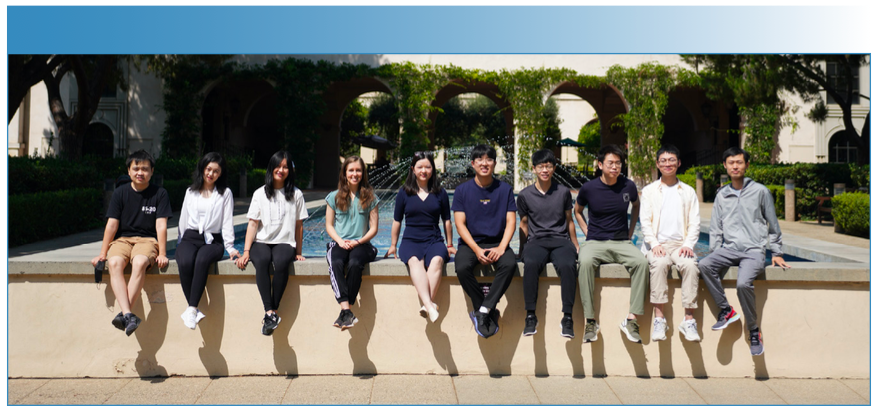
A Researcher with Impact
In addition to her Raman research and teaching, Wei has made other impactful contributions to the broader field of molecular spectroscopy. Potma believes that Wei’s most significant contributions involve the development of the now well-known Raman molecular probes, as she pushed the capabilities of Raman tags to probe biological meaningful metabolic processes. “This development has really changed the field of Raman and stimulated Raman scattering (SRS) microscopy,” he said. Wei has further impacted the field by combining SRS with expansion microscopy, thereby allowing label-free imaging with super resolution. “I admire this work a lot, because I tried to do same thing several years ago, but I miserably failed!” he quipped. “Lu has shown that a modified expansion approach is needed to make it work for SRS, and it is this insight that made all the difference. Excellent work!” Min has known Wei for over 12 years, and shares that she was one of his first graduate students when he started his laboratory at Columbia University in 2010. After graduating with her PhD in 2015, Wei stayed in Min’s laboratory as a postdoctoral researcher before starting her own independent career at Caltech in 2018. Min says that Wei has made significant contributions by demonstrating SRS imaging of customized alkyne tags as a generalized method for imaging small metabolites and drugs inside live cells. “Another major contribution would be the development of super-multiplex vibrational imaging technology by developing rainbow-like Raman dyes and ultrasensitive Raman microscopy,” he said.
Fujita further praises Wei’s work. “Lu’s most impactful paper is the one published in Nature in 2017. This paper had a significant impact on the spectroscopy community and the communities in biology and medicine,” he said. Fujita notes that Wei’s approach modifies the vibrational property of dye molecules for multiplex imaging using the sharp Raman emission characteristics. “This approach has provided a new toolkit to chemical biology for the development of probes for biological imaging, which conventional fluorescence probes cannot realize,” he said.
A Dedicated Researcher
Wei is insightful as a researcher, with a level of determination to match. Min, her PhD mentor at Columbia, saw this firsthand. “Our initial idea of imaging newly synthesized proteins by stimulated Raman scattering (SRS) microscopy was much riskier and more uncertain than what it appears now,” he says, noting that the research was started when the group did not even have an SRS microscope in their laboratory. It was Wei who recognized the potential of the technique, so she took the initiative for this project, and found creative solutions to the challenges. “In order to acquire the key SRS images, Lu flew to our collaborator’s lab in Houston, and worked 15 days straight there,” Min said. “The data she collected there was published in PNAS in 2013, reporting optical imaging of newly synthesized proteome in living cells for the first time (8).” This determination is a quality that Min continues to see in Wei. “Lu is very determined when pursuing research projects,” he said. “Many projects she had worked on at Co- lumbia, as well as several very recent papers from her Caltech lab, were regarded as nearly impossible at the beginning.”
The Future
Major research leaders point to a bright future for Wei. “Dr. Wei is a talented young vibrational spectroscopist and is growing into a future leader in the field,” said Min.
Ji-Xin Cheng, a professor at Boston University, agrees. “I consider Lu Wei as a rising star and next generation leader of the chemical microscopy field,” he said. “She is very creative in developing novel probes and new imaging methods for important applications in life science.”
Fujita also foresees Wei having a leading role in life sciences—and beyond. “Lu stands at the crossroads between chemistry, physics, and biology, providing useful tools for cutting-edge science and demonstrating the fascinating biological applications that can be achieved with them,” he said. Fujita anticipates that Wei’s ability to present new concepts and demonstrate their importance may lead her to other useful developments for both basic science and applications. “I am very much looking forward to seeing what she will be interested in, and how she will bring it to the world of vibrational imaging and advance spectroscopy in the future,” he said.
Potma put it more simply. “I think Lu is a game changer,” he said.
References
(1) X. Bi, K. Miao, and L. Wei, J. Am. Chem. Soc. 144(19), 8504–8514 (2022). https://doi.org/10.1021/jacs.2c01991
(2) H. Wang, J. Du, D. Lee, L. Wei,”Stimulated Raman Scattering Imaging with Small Vibrational Probes,” in Stimulated Raman Scattering Microscopy, J.-X. Cheng, W. Min, Y. Ozeki, and D. Polli, Editors (Elsevier, Amsterdam, The Netherlands, 2022), pp. 289–310. https://doi.org/10.1016/B978-0-323-85158-9.00023-3
(3) W. Min, L. Shi, H. Xiong, and L. Wei, Stimulated Raman coupled fluorescence spectroscopy and microscopy system and method, U.S. Patent Application 17/473,259 (2021). https://patents.google.com/patent/US20210404958A1/en
(4) J. Du and L. Wei, J. Am. Chem. Soc. 144(2), 777–786 (2022). https://doi.org/10.1021/jacs.1c09689
(5) C. Qian, K. Miao, L.-E. Lin, X. Chen, J. Du, and L. Wei, Nat. Commun. 12, 3648 (2021). https://doi.org/10.1038/s41467-021-23951-x
(6) L. Wei, F. Hu, Y. Shen, Z. Chen, Y. Yu, C.C. Lin, M.C. Wang, and W. Min, Nat. Methods 11(4), 410–412 (2014). https://doi.org/10.1038/nmeth.2878
(7) L. Wei, Z. Chen, L. Shi, R. Long, A.V. Anzalone, L. Zhang, F. Hu, R. Yuste, V.W. Cornish, and W. Min, Nature 544, 465–470 (2017). https://doi.org/10.1038/nature22051
(8) L. Wei, Y. Yu, Y. Shen, M.C. Wang, and W. Min, Proc. Natl. Acad. Sci. 110(28), 11226–11231 (2013). https://doi.org/10.1073/pnas.1303768110
(9) F. Hu, C. Zeng, R. Long, Y. Miao, L. Wei, Q. Xu, and W. Min, Nat. Methods 15(3), 194–200 (2018). https://doi.org/10.1038/nmeth.4578
(10) L. Wei, F. Hu, Z. Chen, Y. Shen, L. Zhang, and W. Min, Acc. Chem. Res. 49(8),1494–1502 (2016). https://doi.org/10.1021/acs.accounts.6b00210
(11) D. Lee, C. Qian, L. Li, K. Miao, J. Du, V.V. Verkhusha, L.V. Wang and L. Wei, J. Chem. Phy. 154, 135102 (2021). https://doi.org/10.1063/5.0043791
(12) K. Miao and L. Wei, ACS Cent. Sci. 6(4), 478–486 (2020). https://doi.org/10.1021/acscentsci.9b01196
(13) J. Du, Y. Su, C. Qian, D. Yuan, K. Miao, D. Lee, A.H.C. Ng, R.S. Wijker, A. Ribas, R.D. Levine, J.R. Heath, and L. Wei, Nat. Commun. 11, 4830 (2020). https://doi.org/10.1038/s41467-020-18376-x
Jerome Workman, Jr. is the Senior Technical Editor for Spectroscopy. Direct correspondence about this article to jworkman@mjhlifesciences.com ●
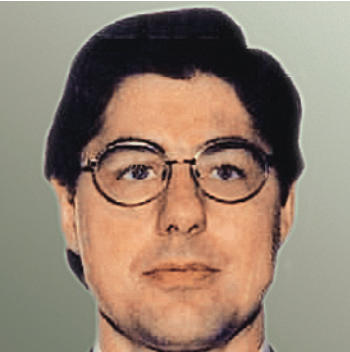
New Study Reveals Insights into Phenol’s Behavior in Ice
April 16th 2025A new study published in Spectrochimica Acta Part A by Dominik Heger and colleagues at Masaryk University reveals that phenol's photophysical properties change significantly when frozen, potentially enabling its breakdown by sunlight in icy environments.
Advanced Raman Spectroscopy Method Boosts Precision in Drug Component Detection
April 7th 2025Researchers in China have developed a rapid, non-destructive Raman spectroscopy method that accurately detects active components in complex drug formulations by combining advanced algorithms to eliminate noise and fluorescence interference.
